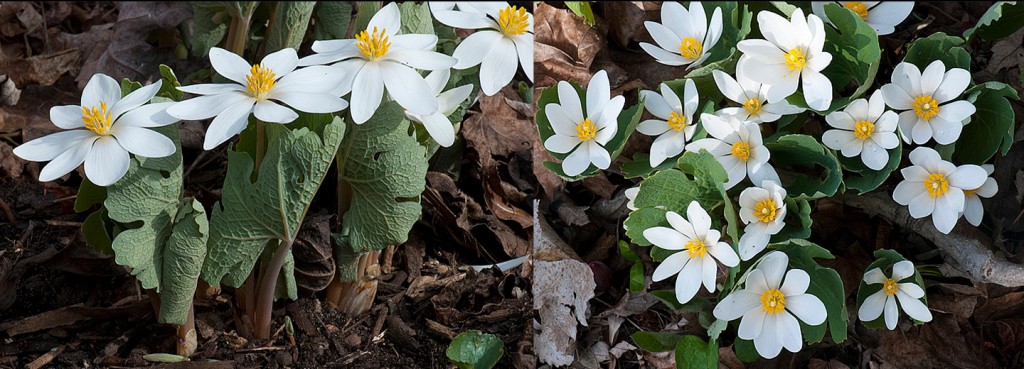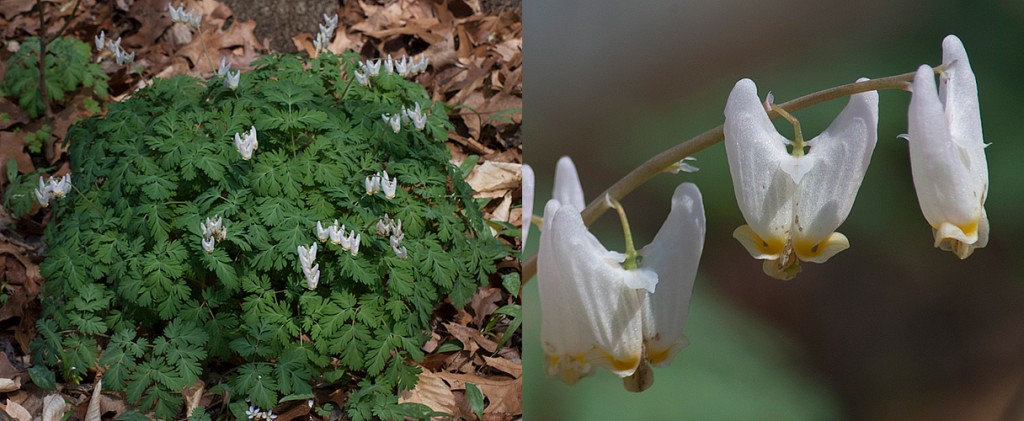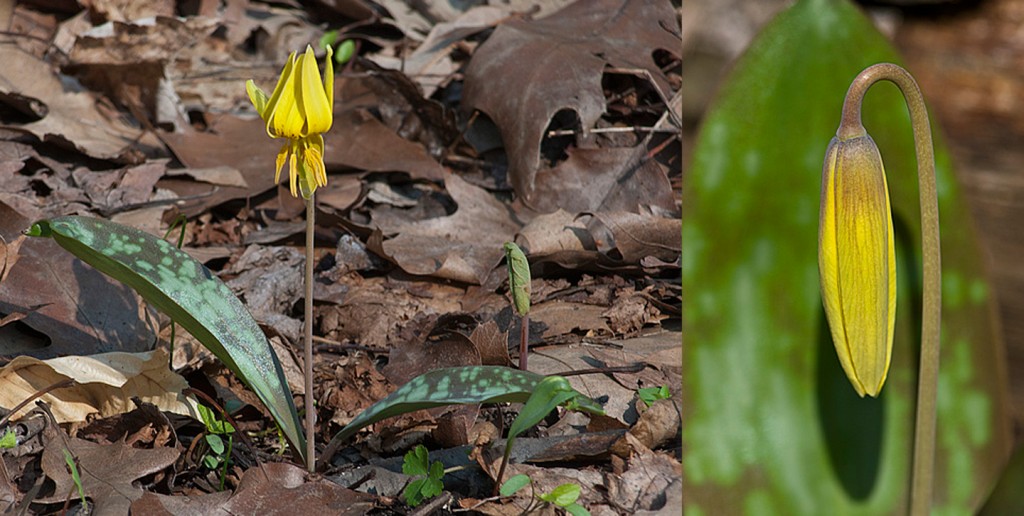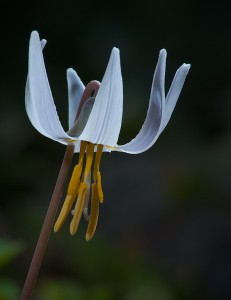Bloodroot (Sanguinaria canadensis) is a common Michigan wildflower. Red plant juices flow through all parts of the plant, whence the common name. The juices were used as a non-permanent fabric dye and by the Native Americans as body paint. In southern Michigan, it flowers in April. Large colonies are found in rich woodlots. It reproduces by rhizomes that can form large clumps and by seed. The seeds are myrmecochorous, meaning ants distribute them.
Dutchman’s-breeches (Dicentra cucullaria) is another common Michigan wildflower. It is often found with bloodroot and blossoms at the same time. The common name comes from the shape of the flower that resembles a pair of upside-down pants.
Yellow Trout Lily (Erythronium americanum) is a member of the Lily Family (Liliaceae). As now recognized Michigan has only two genera in the lily family, Erythronium and the true Lilies (Lilium). The remaining genera that once formed this large family have been moved into ten other families. Other common names for this species are Dog-tooth-violet, Yellow Adder’s Tongue, and Yellow Fawn Lily. This is one of the problems with common names and a good reason to use the scientific name. The yellow hanging flowers and mottled leaves are the key characters of this plant. This species has yellow anther individuals and red-brown anther individuals.
White Trout Lily (Erythronium albidum) is a similar species with white flowers and the leaves less mottled. It is absent north of Bay City in the Lower Peninsula and is only found in the western Upper Peninsula. It trends to grow in floodplains and is locally common.
Copyright 2013 by Donald Drife
Webpage Michigan Nature Guy
Follow MichiganNatureGuy on Facebook




